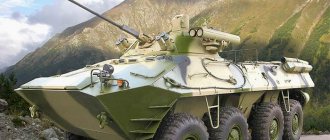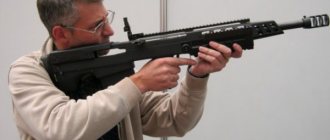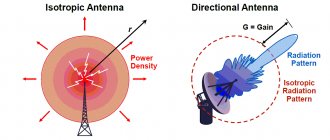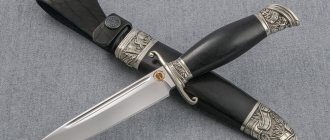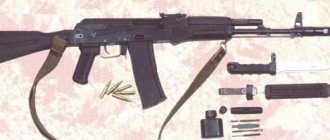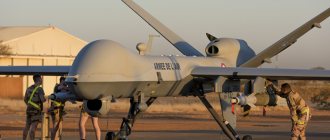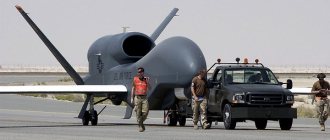The Orlan-10 mobile radio-controlled aircraft is a proven example of Russian drones, a confident leader in the defense equipment market.
In the civilian field, this unpretentious aircraft is indispensable for reconnaissance and information collection in the epicenters of environmental and man-made disasters, for supervising extended construction projects and tracking forest fires.
History of the UAV
In the middle of the 20th century. In England, the first radio-controlled reusable aircraft was created, which was named “H.82B QueenBee”. For 10 years, this model was used by the Royal Armed Forces of Great Britain as a target for training military pilots.
The first combat unmanned aerial vehicle was the German-made V-1, which in appearance resembled an artillery shell. Its feature was the ability to launch not only from the ground, but also in the air. Today, all world powers use radio-controlled drones for defense and reconnaissance purposes.
At the beginning of the 21st century. The active use of unmanned aircraft for civil needs has given a new round to the development of UAVs. Drones have become used for mapping and aerial photography, border patrol, tracking forest fires and wildlife migration.
The pride of the Russian Aviation Industry is the multi-purpose unmanned aerial system "Orlan-10", designed at the St. Petersburg enterprise STC LLC in 2010. Today it is used not only in the armed forces, but also for civilian purposes, such as:
- optical inspection of construction sites, roads, bridges, etc.;
- collection of information at the epicenters of disasters with destruction and mass casualties.
Prospects for the development of UAVs
Currently, drones have been greatly modernized and improved. Developments are underway from miniature models to complex powerful devices. In the world, the production of drones is experiencing a real boom, which was the result of the awareness of the most important advantages of UAVs over manned aircraft. First of all, this is their relatively low cost, insignificant maintenance costs, as well as the ability to perform tasks with overloads that are beyond the physiological capabilities of the pilot.
The military leadership of our country has set Russian designers the task of catching up, so that by 2022 the share of Russian drones in the world market will be at least 5%. Today, Israel is considered the world leader in the production of unmanned aerial vehicles. Most Western experts are of the opinion that in future conflicts of the 21st century the main focus will be on the use of UAVs.
Pentagon military experts recognized the Orlan-10 UAV as the most important element of the strike complex. They came to this conclusion because of the device’s ability to make adjustments to impacts from artillery guns. Therefore, in addition to all other advantages, the Orlan-10 can undoubtedly be considered an effective fire control system.
Design engineers from the St. Petersburg Special Technology Center LLC do not stop their work on improving the Orlan system. The Orlan-30 and Orlan-Universal models have already been created. These devices have an extended service life, can withstand heavier loads, and operate without replacing equipment at night and during the day using more powerful professional photo and video equipment.
Technical characteristics of "Orlan - 10" and its design
"Orlan-10" is assembled from metal and plastic structures. The motor and screw propeller are located in the nose of the aircraft body. The free space inside the wings of the aircraft is used to accommodate technical photographic and video equipment.
When designing the UAV, a modular structure was used, which makes it possible to transport the entire complex assembled and to flexibly change the technical equipment on board in the field. This design solution ensures convenient transportation of the multifunctional complex.
Specifications:
| Case length | 1 m 80 cm |
| Wingspan | 3 m 10 cm |
| Weight without equipment | 12.5 kg |
| Payload weight | 5 kg |
| Takeoff weight | 18 kg |
| Engine type, fuel | ICE, gasoline A-95 |
| Flight altitude limit | 5 km |
| Service ceiling | 6 km |
| Radius of action | up to 200 km |
| Maximum speed | 160 km/h |
| Permissible wind speed at start | 10 m/s |
| Operating Temperature Coverage | from -30 ֩С to +50 ֩С |
| Flight time without refueling | 18 h |
| , Russia |
Western heavyweights
It is worth noting that the Russian approach to the use of UAVs on the battlefield is fundamentally different from that practiced in the West. They rely on attack UAVs that carry a combat load. Today, the bulk of unmanned aircraft in the US and NATO armies are heavy attack drones, such as the MQ-9 Reaper and RQ-4 Global Hawk. These “heavyweights”, together with their Chinese counterparts, are widely used in the Arab East. Attack UAVs became a key combat unit in Afghanistan and Iraq, since the opposing side did not have any air defense systems.
The Turkish military actively used its Bayraktar TB-2 attack drones during Operations Euphrates Shield, Olive Branch and Spring of Peace. Given the complete absence of air defense systems among terrorists and Kurdish rebels, they also showed their best side.
© aa.com.tr
The Turkish military actively used its Bayraktar TB-2 attack drones during Operations Euphrates Shield, Olive Branch and Spring of Peace.
However, attempts by Turkish troops to use their drones against a high-tech enemy ended in failure. In May 2017, the semi-experimental Bayraktar was shot down by the Pantsir-S1 complex while performing a reconnaissance flight near the Khmeimim airbase. However, the loss did not sober up the customers, and purchases of such equipment continued. Production vehicles were then used against the Syrian Arab Army and the Libyan National Army, suffering heavy losses.
It turned out that the Pantsir-S1, Kvadrat and Buk-M2E anti-aircraft missile systems easily deal with such devices. With a weight of 650 kg and a wingspan of 12 meters, the Bayraktar carries a load of two SMM-type guided munitions with a total weight of up to 150 kg. Slowly flying and clearly visible on radar and thermal imager screens, it is an excellent target for anti-aircraft gunners. The presence of a heavy and powerful metal motor and a large propeller - “favorite” targets for missiles - does not help.
In comparison, the Orlan-30 is 21 times lighter and much more compact, making it much more difficult to detect and, even more so, to shoot down. In addition, “eagles” are an order of magnitude cheaper and better suited for mass construction, which more than compensates for possible losses. And even though such a drone does not carry a combat load, it is capable of independently obtaining information about targets on the battlefield and transmitting their exact coordinates to the control center. After this, artillery comes into play.
How a drone works
The UAV is launched from a mobile ground installation, similar to a catapult. Having gained speed, the device performs controlled gliding over the surface of the earth due to the internal combustion engine. The recommended working fuel for the engine is AI-95.
The record recorded speed of the drone is 169 km/h. In order for the signal from the video equipment to reach the control center, the flight range is limited to 200 km at a flight altitude of 5 km. The maximum flight time without refueling is 18 hours.
The UAV is landed by the operator using an automatic parachute. For additional safety, two safety systems are provided that ensure the safety of the aircraft during a hard landing. When overloaded, the structural parts of the aircraft become disconnected from each other, minimizing severe damage.
The Orlan-10 UAV monitors objects using photo and video recording equipment installed inside the wing consoles.
Drone payload:
- thermal imagers (Flir Photon 320, 640);
- plan cameras (Canon EOS 500D, 50D, 5D);
- video cameras (planning, gyro-stabilized, directional, rotating).
From supersonic cruise missiles to civilian drones
In the post-war period, unmanned aircraft rapidly gained altitude, increased in speed and combat power.
Since the late 50s, the USSR has confidently emerged as a leader. A compelling argument in favor of this was the supersonic cruise missile Tu-121, developed at the A. N. Tupolev Design Bureau. The formidable weapon remained unclaimed as mass production of more effective strategic missiles began. However, the project was not closed. Another use has been found for the powerful Soviet Tu-121 drone. At its base, the Tupolev team first created a flying target for air defense troops, and later a whole family of reconnaissance vehicles Tu-123, 141 and 143 (Yastreb, Swift and Reis, respectively).
Tu-121
The Americans did not sit idly by either. The most fruitful period was the Vietnam War, where their drones were engaged in photo reconnaissance, electronic warfare, relaying radio communications, and simulating air targets. It is worth noting the well-proven UAV 147E.
Israel loudly declared itself. During the Arab-Israeli conflict in 1973, with the help of its IAI Scout and Mastiff drones, the Israeli Air Force effectively penetrated the enemy's air defense system and effectively destroyed it.
However, wars began and ended, and gradually the understanding came that UAVs could also work successfully in a peaceful field. Over the past 2-3 decades, unmanned drones have learned to conduct environmental monitoring, support network communications and control maritime traffic. Modern technologies have made them more compact, cheaper and technically equipped, increasing their potential many times over.
Features of application
The multifunctional complex "Orlan - 10" not only provides the ability to simultaneously control from 2 to 4 UAVs, but also allows you to create a local network of up to 30 operators who control all technical equipment.
Complex capabilities:
- through a modular design, the composition of on-board equipment and payload is replaced;
- aerial photography is carried out simultaneously with fixing coordinates;
- use in confined spaces and bad weather conditions;
- the on-board generator helps cope with loads during the flight;
- the ability to use 1 of 4 aircraft from the complex for relaying from the control center.
The drone control system unit includes:
- operator's workplace;
- UAV radio control equipment;
- launch capsule;
- installation maintenance equipment;
- autonomous gasoline generator (1 kW).
For Orlan-10, it is possible to simultaneously equip several types of payload equipment. One aircraft will fit: a thermal imager, a video camera, a camera, and a radio transmitter.
If necessary, the UAV will be equipped with a signal repeater for the simultaneous use of several drones at once. This allows the operator to monitor several technical equipment at once without returning the aircraft to the base to change equipment.
What is it currently used for?
"Orlan-10" is used for military-strategic reconnaissance, photo and video recording of the deployment of enemy armed forces, adjusting fire in combat areas or monitoring extended objects located in hard-to-reach areas.
The ground control center of the complex serves up to 4 drones simultaneously. Connecting with a unified military coordination system, the UAV transmits data to destroy enemy targets to self-propelled artillery, tanks and air defense systems.
For peaceful purposes, Orlan-10 is used for repair, restoration and search and rescue operations in areas of environmental or man-made disasters. And also for geodetic surveying in hard-to-reach places.
Bad weather conditions do not create problems for the use of the complex due to the UAV’s resistance to cross winds and good aerodynamics.
UAV take-off and landing system
To launch Orlan-10, a small special catapult is used. The momentum needed to quickly gain speed is provided to the drone by a pre-tensioned rubber shock absorber. Like the UAV itself, the catapult can be quickly disassembled for subsequent transportation by car.
This drone does not have a landing gear, as a parachute is used for its soft landing. The weight of the drone, even with a full load, is relatively small, and therefore it simply does not require a landing strip. The parachute deployment is ensured starting from a minimum permissible height of 30 meters. Moreover, to further soften the impact on the ground, Orlan-10 is additionally equipped with an inflatable landing buffer. It is filled with compressed air automatically, immediately after the parachute is released.
In the event that the vertical speed cannot be suppressed by these standard means, the safety of the electronic equipment will be ensured by an emergency destruction scheme for the airframe - it will be divided into separate elements, so that the likelihood of accidental damage to the payload is minimal.
Launching the Orlan-10 UAV from a catapult.
The normal landing scheme involves the UAV launching into a given area at the operator’s command, stopping the engine and releasing the parachute. In case of loss of communication with the ground control point, the drone can be automatically returned and land on its own.
Does Orlan-10 have additional capabilities?
Today, 200 Orlan-10 units are used in service in the armed forces of the Russian Federation. Every year, Orlan-10 drones near Novorossiysk ensure fair judging at the international Airborne Platoon competition. During competitions, UAVs monitor the actions of combat aircraft crews and ensure the safety of spectators in the stands.
On April 28, 2022, the first landing of Orlan-10 on a Russian Navy aircraft was made. Until this day, aircraft were only used to fly and collect information above the surface of the earth.
The complex task of landing a drone on the deck of a moving ship was solved by installing a special network secured with supports throughout the landing area. The operator coordinated the landing of the UAV on the deck of the ship and immediately turned off the device when it touched the network. During landing approach, the speed of the drone was reduced to minimum values, and the approach to the ship was adjusted as much as possible.
Target equipment
Thanks to the collapsible fuselage and the presence of additional free space inside the wing consoles, the Orlan-10 can be equipped with several different options for electronic equipment. The total payload weight reaches five kilograms, which allows the following types of target equipment to be placed on board:
- Cameras for performing routine aerial photography (the lens axis is directed downward, strictly perpendicular to the surface of the earth). In the basic configuration, Canon EOS cameras in the 5D, 50D and 500D modifications are used for this.
- Video cameras for routine dynamic aerial photography.
- Forward-facing video cameras to perform dynamic shooting directly in the direction of the unmanned aerial vehicle.
- PTZ video cameras.
- Controp gyro-stabilized video cameras (models D-STAMP and U-STAMP).
- Thermal imagers. Installed instead of video cameras.
- Transceiver modules. Used to suppress cellular terminals and cause interference. The equipment allows you to jam signals of all formats used today.
- Relay modules.
Devices such as BHV-558 EX and Flir Photon in modifications 320 and 640 were used as planning, rotating and heading cameras on the first serial Orlan-10 UAVs.
Preparing for the launch of the Orlan-10 UAV group.
In addition, an automated control system is installed on board the unmanned aerial vehicle, which includes a receiving satellite antenna and a GPS/GLONASS module. The coordinates of sixty control points that form the flight route can be entered into the autopilot's RAM. For each of them, the desired altitude and “behavior” of the UAV is set - from normal flight over the target to long loitering. The operator sets the coordinates of the points in advance, while still on the ground, upon reaching which the on-board equipment is turned on.
Options for reactions to the occurrence of various problems are separately programmed. Thanks to this, if communication with the ground station is lost, the satellite signal disappears, or the power plant fails, the drone will try to independently reach the final point of the route, return to its launch site, make an emergency landing, or self-destruct.
